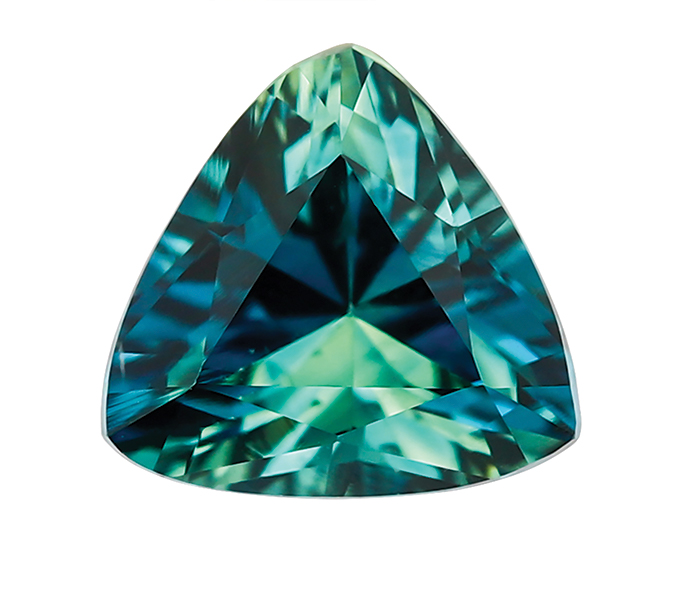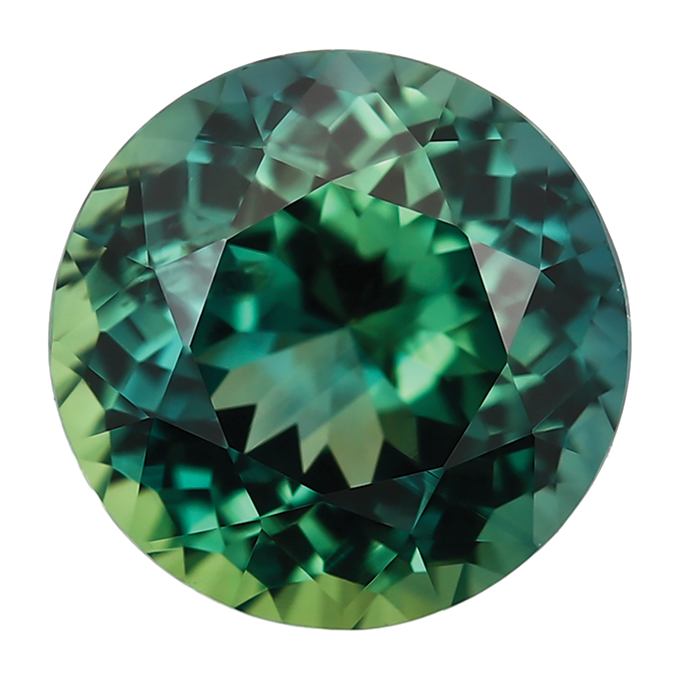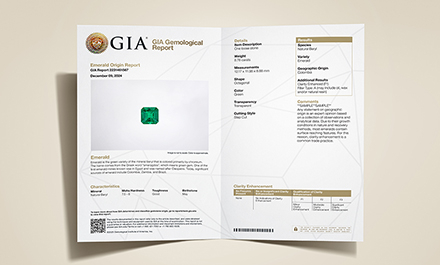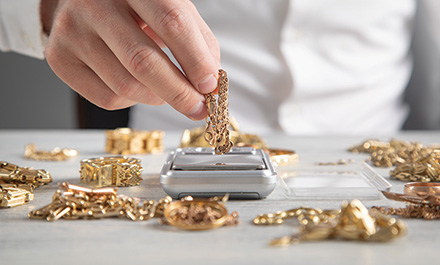Spurred by growing market demand for teal sapphires, the Gem and Jewelry Institute of Thailand is providing clear colour standards for the trade term to prevent their misclassification as blue sapphires.
This article first appeared in the JNA September/October 2024 issue.
Teal sapphire’s captivating hue and innate attributes that make it ideal for jewellery are fuelling demand for this coloured gemstone, which is increasingly making its way into jewellery collections.
A member of the corundum family, which includes blue sapphire and ruby, teal sapphire exhibits a mix of blue and green colours, often in varying intensities. This colour combination results from the presence of trace elements, primarily iron and titanium, within the crystal structure. The ratio and concentration of these elements determine the exact shade of teal, which can range from a more blue-dominant tone to one with a stronger green presence.
The term "teal" refers to a specific shade that sits between blue and green on the colour spectrum, resembling the colour of teal ducks that are known for the rich and distinctive colours of their feathers. Many teal sapphires are prized for their natural, untreated beauty.
Colour standards
Attesting to the coloured gemstone’s growing popularity is the increase in submissions of teal sapphires for classification by The Gem and Jewelry Institute of Thailand (Public Organization) or GIT. To make certain these greenish-blue stones are not mistaken for blue sapphires, GIT formulated colour standards for the trade term “teal sapphire” earlier this year.
“The surge in consumer interest in teal sapphires over the last few years prompted us to establish clearer guidelines and communicate them more prominently to minimise confusion and ensure consistent classification practices,” said GIT Director Sumed Prasongpongchai.
For GIT to classify a stone as a teal sapphire, its colour must fall within the designated boundary of the master stones under standard lighting conditions. It should not display any alterations in colour when exposed to different light sources. The stone should also show no distinct bands of colour zoning. It must weigh at least half a carat and be either unheated or conventionally heat treated. And the stone must have a homogeneous colour from a face-up view with at least 20 per cent brilliancy.
According to Prasongpongchai, these standards specify that the stone’s colour must not fall within the designated range of blue sapphire master stones. GIT then uses the Munsell colour chart to determine the precise colour name.
“We updated our grading criteria and began implementing this practice based on the new standards,” he explained. “The main objective is to minimise consumer confusion between blue sapphires and teal sapphires. This new approach helps us ensure that greenish-blue sapphires are not classified as blue sapphires.”
Bespoke appeal
According to GIT, demand for teal sapphire has grown in recent years, particularly in the contemporary jewellery market. The stone’s distinctive hue and rarity make it a desirable alternative to traditional blue sapphires and other gemstones.
Its versatile colour complements a wide range of skin tones and metal settings, making it an excellent choice for jewellery such as engagement rings, pendants and earrings. Its mesmerising shade is also favoured by those seeking something different and rare.
In addition, teal sapphires are highly durable, ranking 9 on the Mohs scale of hardness. This makes them suitable for everyday wear, including in rings and bracelets that might be subject to more wear and tear.
Teal sapphires are mined in several locations around the world, with some of the most notable sources being in Australia, Madagascar, and Montana in the US. Australian teal sapphires are particularly renowned for their deep, vibrant colours, while those from Montana often feature lighter, more subtle shades with unique colour zoning that adds to their appeal.
The stone’s value is determined by factors such as colour, clarity, cut and carat weight. Stones with a well-balanced mix of blue and green, high clarity and an excellent cut tend to command higher prices. Larger, high-quality teal sapphires are particularly hard to find and can be quite valuable, GIT noted.











